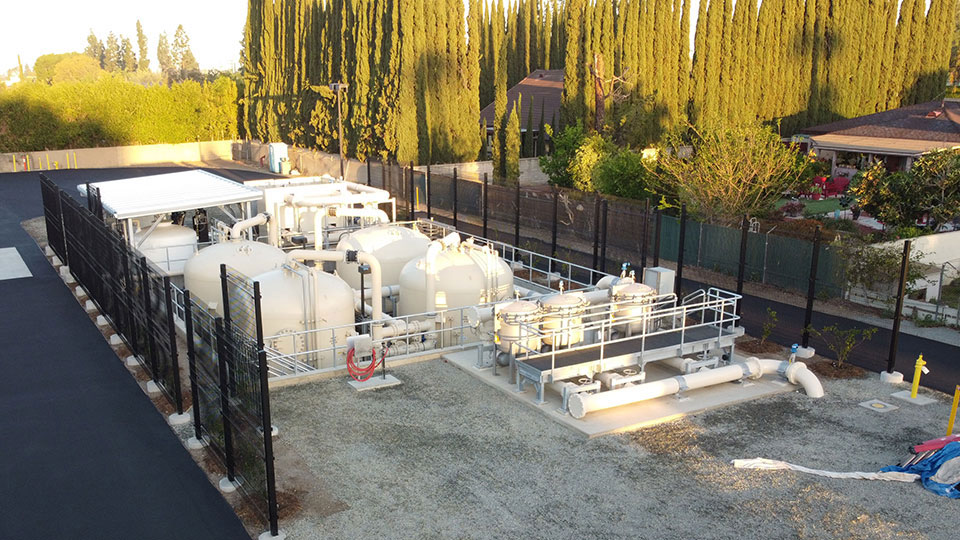The Importance of PFAS Treatment in Cleaning Polluted Water
Advanced Approaches for Reliable PFAS Contamination Elimination
The relentless challenge of PFAS contamination demands the exploration of advanced elimination techniques that can effectively attend to these unsafe compounds. Cutting-edge innovations, such as innovative oxidation processes and various adsorption strategies, have actually emerged as promising services in mitigating PFAS from affected environments.
Comprehending PFAS Qualities
Although per- and polyfluoroalkyl substances (PFAS) have actually been commonly made use of in numerous commercial and customer products as a result of their special residential or commercial properties, their determination in the atmosphere postures significant obstacles to public health and wellness and security. PFAS are a team of artificial chemicals identified by a carbon-fluorine bond, one of the strongest chemical bonds known, which adds to their extraordinary security and resistance to destruction. This security permits PFAS to accumulate in the atmosphere and living microorganisms, causing possible adverse health and wellness results.
These very same residential properties add to their ecological persistence, as PFAS do not quickly damage down with all-natural procedures. Understanding the chemical properties of PFAS is essential for establishing reliable techniques to manage and minimize their environmental effect.
Innovative Remediation Technologies
The persistence of PFAS in the environment has actually spurred the advancement of cutting-edge removal modern technologies intended at successfully eliminating these pollutants from affected ecosystems. Amongst the most encouraging approaches are advanced oxidation processes (AOPs), which make use of effective oxidants to break down PFAS substances into less damaging compounds. AOPs can be customized to target particular PFAS structures, improving their effectiveness.
An additional arising innovation is using adsorption media, such as triggered carbon and ion exchange resins, which can selectively record PFAS from infected water. These materials have shown considerable removal effectiveness, although routine substitute and regrowth are required to keep performance.
Membrane filtering strategies, including reverse osmosis and nanofiltration, are additionally getting traction in PFAS removal. These methods can effectively separate PFAS from water, providing a practical solution for dealing with polluted sources. Additionally, thermal therapy methods, such as incineration, can break down PFAS right into safe results, though they need careful management to regulate exhausts.
Jointly, these ingenious remediation innovations represent substantial advancements in the ongoing battle against PFAS contamination, offering various strategies to restore affected atmospheres and protect public health and wellness.

Bioremediation Methods
Bioremediation techniques use an encouraging technique to dealing with PFAS contamination by harnessing the natural capacities of microorganisms to break down these relentless substances (m270 waste management). This technique involves using bacteria, fungis, and other germs that can metabolize or change PFAS compounds into much less harmful results
Recent developments in molecular biology and ecological microbiology have enhanced our understanding of microbial areas and their possible duties in PFAS degradation. Scientists are proactively exploring specific strains of microorganisms, such as Pseudomonas and Bacillus, which have shown the capability to damage down certain PFAS compounds.
Sitting bioremediation methods, where microorganisms are boosted directly in polluted visite site atmospheres, can be especially efficient. This approach often involves the application of nutrients or electron benefactors to advertise microbial growth and task. Additionally, ex-spouse situ approaches, such as bioreactors, permit regulated problems that can maximize destruction rates.
Regardless of the pledge of bioremediation, obstacles stay, including the complicated nature of PFAS substances and the need for comprehensive field testing - m270 waste management. Proceeded research and advancement will certainly be essential to fine-tune these strategies and evaluate their effectiveness in diverse environmental contexts
Adsorption and Purification Methods
Addressing PFAS contamination frequently involves utilizing adsorption and filtration approaches, which are created to remove these consistent chemicals from water and soil. Amongst the different techniques, turned on carbon adsorption is commonly used due to its high surface area and porosity, making it possible for reliable trapping of PFAS particles. Granular turned on carbon (GAC) systems are especially favored for dealing with large volumes of contaminated water, while powdered triggered carbon (POLITICAL ACTION COMMITTEE) can be utilized for smaller-scale applications.
Ion exchange materials also show assurance in PFAS elimination, working by exchanging PFAS ions with less damaging ions in the water. This approach has actually shown effectiveness in concentrating PFAS compounds, facilitating their succeeding removal. Furthermore, membrane filtering techniques, such as reverse osmosis and nanofiltration, operate by making use of semi-permeable membranes to separate PFAS from water, successfully decreasing their focus.
While these approaches are effective, they have to be meticulously selected based on the certain PFAS compounds existing and the ecological context. Continual developments in products science and design are resulting in the growth of unique adsorbents and purification systems that boost elimination efficiencies and decrease operational prices, therefore improving total removal initiatives.
Regulatory and Policy Factors To Consider
Exactly how can reliable regulatory frameworks boost the administration of PFAS contamination? Extensive plans are important to guarantee a collaborated and robust feedback to the challenges presented by per- and polyfluoroalkyl Look At This materials (PFAS) Rules can establish clear standards for surveillance, reporting, and remediating PFAS-contaminated websites, cultivating accountability among sectors and public entities. (m270 waste management)

Additionally, financial motivations and grants can be integrated into plans to urge the fostering of sophisticated remediation innovations. Policymakers need to additionally focus on research study and development, making sure that arising approaches for PFAS removal are confirmed and applied properly.
Moreover, public understanding and involvement are crucial parts of any kind of regulative approach, encouraging areas to advocate for their wellness and safety and security. Inevitably, a well-structured governing environment will certainly not just improve the management of PFAS contamination yet also promote sustainable methods that shield future generations.
Conclusion
In summary, the intricacy of PFAS contamination necessitates the fostering of advanced removal approaches. Continued research and development in this area remain critical to addressing the difficulties presented by PFAS contamination.